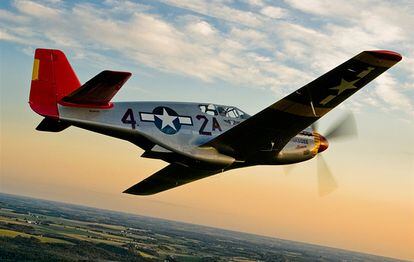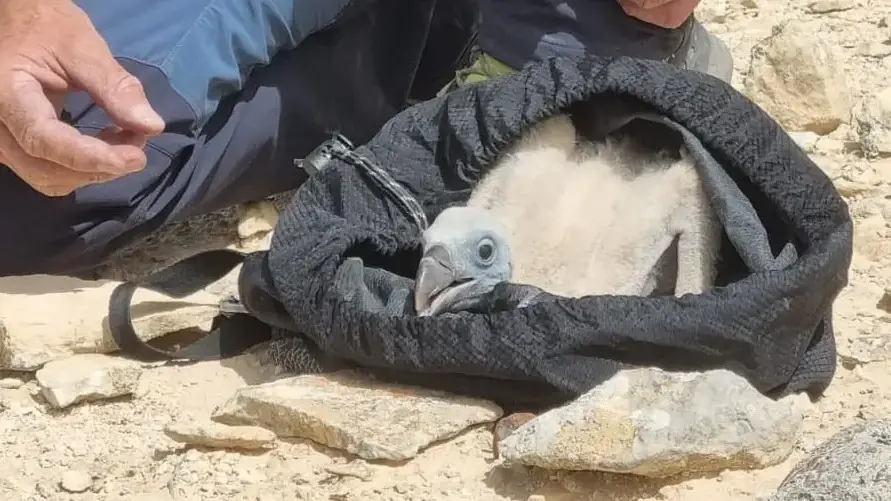On August 23, 1944, somewhere in the sky over Czechoslovakia, a North American P-51 Mustang fighter jet — “Cadillac from heaven!”, as young Jim Graham (Christian Bale) would exclaim in
Empire of the Sun
—, left He briefly took up his position as an escort for B-17 bombers and charged full throttle after a German attacking plane, shooting it down with quick bursts.
Indoctrinated like all German soldiers in the racial theories of the Third Reich, the pilot of the enemy apparatus, a magnificent Focke-Wulf Fw 190 fighter, would probably have been very surprised to learn that his enemy, the aviator who had won the game, was a black
More information
Chuck Yeager, the aviation legend who broke the sound barrier
That man who got the victory in deadly
dogfight
That day, one of the first African-American fighter pilots, one of the famous Tuskegee Airmen, the Tuskegee Airmen, because of the base where they were trained in Alabama, was the young US Air Force Lieutenant Charles McGee, who the Domingo died at the age of 102 (which is already the age for a fighter pilot) in his sleep, who knows if not dreaming that he was flying again in skies full of brilliance and danger. “It was all very fast, you left the escort formation, you went to the attacking plane, you fought and you returned to your site,” explained McGee —in an interview collected for the National WWII Museum oral history fund in New Orleans— of that episode in which he achieved his only demolition of the war. “You weren't going to go after the enemy pilot personally, but to shoot down his plane. I don't know if he was able to parachute, I didn't see him. In any case, you foughtand it was you or him. We did our job."
It is exciting to see and hear McGee, now an old man, very elegant in a red jacket, the color with which the Tuskegee, who formed the 332nd Fighter Group, distinctively painted the tails of their planes and for which they received the nickname Red Tails, in addition to those of Red Angels and Black Eagles. The old aviator retained the bearing and dignity of that handsome young pilot with a deceptively languid look who fought against the Nazis for freedom in Europe and at the same time against racism in his country.
The Tuskegee Airmen, the first war pilots in the US, to whom two recent films have been dedicated,
Red Tails
(2012) and
Escuadrón de Combate 332
(
The Tuskegee Airmen)
(1995) and a play,
Fly,
(2009), proved in an army and a society in which there was still segregation (in the armed forces until 1948) and despicable prejudices that blacks could not only fly and fight in the air, something that was doubted in some blushing manuals of the armed forces (such as the 1925 memorandum
Use of Negro Manpower in war
), but could do it the same and even better than the whites.
In 1943, with the first black air unit in US history, the 99th Squadron (later to join the 332nd Group), already deployed, a white commander still refused to let them fight under his command.
Charles McGee in his days as a young airman from Tuskegee.
The point is that black pilots, 922 trained at Tuskegee, 355 sent to the front, with a ground support staff of about 16,000 men, were generally very good: they had been pushed so hard that they had to be. They destroyed 112 enemy aircraft in the air (and 150 on the ground) on the same day, March 24, 1945, including three of the fabulous German Me-262 jets. They did not have aces (more than five victories; three men from Tuskegee, like Lee Archer, stayed on four) but this is explained by the iron discipline with which they carried out their mission of escorting the bombers (from targets, the bomber unit of Tuskagee did not enter into action), engaging in combat only when it did not mean leaving their defendants unprotected.It has been noted that the bomber formations protected by the Tuskegee airmen suffered up to half as many casualties as the others. The black pilots had 84 killed, 68 in combat and 32 were taken prisoner.
Their excellence in combat and risking their lives against fascism did not free them from racism on their own side. The Tuskegees were banned from white officers' clubs and no one wanted to wash their clothes: German prisoners had to be used (who would be delighted). The war ended with the Jim Crow laws still in force, and in the subsequent fight for civil rights, the riot at Freeman Camp (sic), a Tuskegee airmen base in Indiana, with 162 arrests, was framed when they tried to enter the premises for whites of the facilities.
McGee, who held the rank of general, had fought in three wars as a fighter pilot, World War II, Korea and Vietnam, totaling 409 combat missions and 6,308 flight hours, and had received numerous decorations, including a Bronze Star, the Distinguished Flying Cross, and the Congressional Gold Medal (awarded collectively in 2007 to all Tuskegee Airmen). In 2011 he entered the National Aviation Hall of Fame. He was shot down twice, in Korea and Laos, both times hitting the right wing. He flew in a multitude of aircraft, Aircobra, Thunderbolt, the emblematic Mustang, F-80 Shoting Star, F-89 Scorpion, Phantom... After retiring as a colonel in 1973 and being the first black base commander and director of the Kansas City airport, at 99 years old, after more than thirty without flying,he took up the controls of an airplane again and piloted a HondaJet (and at a hundred years old he did it again!).
A P-51 Mustang like the ones flown by the Tuskegee Airmen, rebuilt and put into service.
Born on December 7, 1917, in Cleveland, Ohio, McGee was the grandson of a freed slave.
His father was a military chaplain in both world wars and was in the Battle of the Bulge.
The young McGee, who had been a great boy scout, was studying engineering at the University of Illinois when he answered the call to service, and he did not finish his degree until 30 years later, when he left the army.
He married Frances Nelson in 1942 shortly before leaving for the war, and they had 3 children.
He gained the wings in June 1943 and was deployed to Italy in February 1944, in the 302nd squadron of the 332nd group.
"We have lost an American hero," Defense Secretary Lloyd Austin said at the news of McGee's death, who died, according to family testimonies, peacefully and with his right hand over his heart.
It's unclear how many Tuskegee Airmen survive McGee, but as of Sunday, the old group of fearless Black Eagles is much more complete, up there.



/cloudfront-eu-central-1.images.arcpublishing.com/prisa/YSQQ32E6WVBQVDQAMPWPR2HWJI.jpg)





